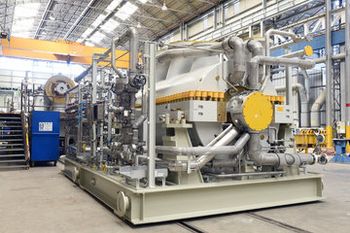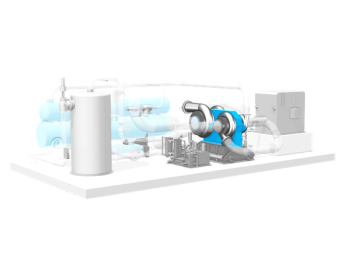
Reducing noise pollution in North Sea
Turbo compressors are a loud noise source because of the high power and speed. Most compressors produce a strong tonal noise component that varies over a wide frequency range from 1,000 Hz to 4,000 Hz, depending on the speed of the compressor and the number of impeller blades.
(The pipe or diffuser duct resonator array is designed to absorb acoustic energy)
In a centrifugal compressor, noise is generated primarily by the impellers and their aerodynamic interaction with the stationary components.
Reducing this noise can be beneficial in many ways. Historically, engineers addressed this compressor noise problem by treating the sound transmission path and applying devices such as sound enclosures and sound insulation. Neither method requires much understanding of the noise source, nor can they be considered in the design phase.
Control noise at source
Today, the preferred technique is to attenuate, or reduce, the noise at its source. The pipe or diffuser duct resonator array is designed to absorb acoustic energy. This Dresser-Rand duct resonator array has undergone extensive testing and confirms that such arrays can reduce noise by 10 dB with no adverse effect on compressor aerodynamic performance. As noise level is a logarithmic scale, a 10 dB reduction equates to a 90 percent sound power reduction on a linear scale. The design of these resonator arrays is effective in reducing associated vibration that can cause structural fatigue failures and damage piping and instrument connections.
Dresser-Rand tests pipe resonator array
A noise test was performed recently for the largest pipe resonator array ever produced, a 30-inch pipe, to validate and confirm the estimated noise attenuation. The compressor is located on a platform in the North Sea, approximately 40 miles west of Statoil’s Kollsnes gas processing plant.
The project involved two complete compression trains with DATUM D18 centrifugal compressors. To reduce noise emissions from the compressor, all necessary components were installed. This included a diffuser resonator array at the first and last stages of the compressor and a pipe resonator array installed on the inlet and discharge process piping.
The actual test was conducted at the Dresser-Rand facility in Le Havre, France. Results showed that the pipe array could achieve more than 10dB attenuation for the frequency range corresponding to the speed range of the compressor. Dresser-Rand’s D-R duct resonator array technology is excellent means of reducing noise pollution at source, and can be applied to new or installed compressors, including compressors built by other manufacturers.
An expanded version appears in Dresser-Rand's Insights magazine.
Newsletter
Power your knowledge with the latest in turbine technology, engineering advances, and energy solutions—subscribe to Turbomachinery International today.





